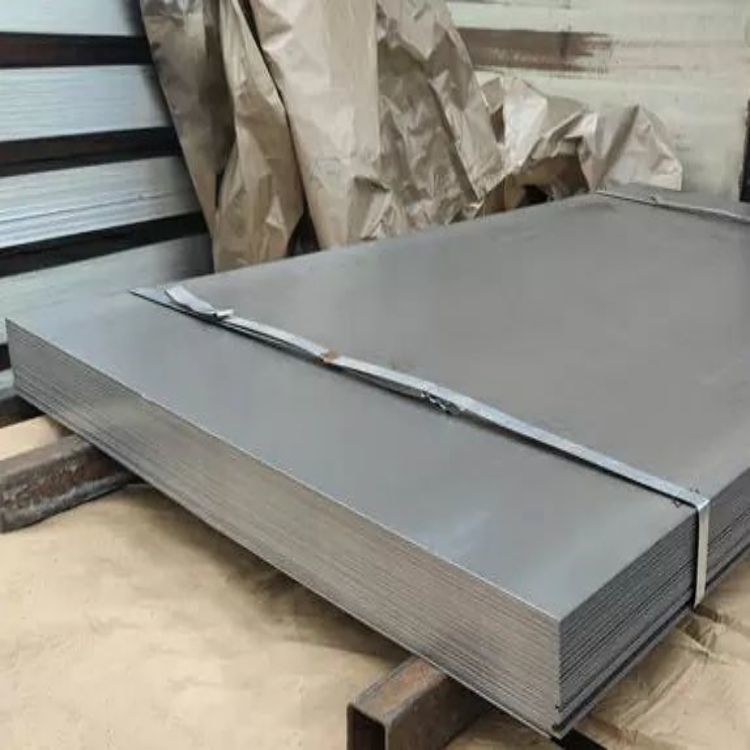Unlocking the Strength of NM400 Carbon Steel Plates for Construction

What is NM400 Steel?
NM400 is a wear-resistant carbon steel plate characterized by its hardness and toughness. Typically, NM400 plates have a hardness range of 360 to 450 HBW (Brinell Hardness), making them suitable for applications where durability is essential. The composition of NM400 generally includes carbon, manganese, silicon, and traces of other elements, contributing to its impressive mechanical properties.
Composition of NM400 Steel
The typical chemical composition of NM400 includes the following:
- **Carbon (C)**: Approximately 0.14%
- **Manganese (Mn)**: About 1.0%
- **Silicon (Si)**: Roughly 0.3%
- **Phosphorus (P)**: Maximum 0.02%
- **Sulfur (S)**: Maximum 0.01%
Each of these elements plays a crucial role in enhancing the strength and wear resistance of the steel, making it ideal for various demanding applications.
Properties of NM400 Carbon Steel Plates
The superiority of NM400 steel lies in its unique properties, which include:
- **High Hardness**: As mentioned, NM400 typically exhibits a hardness rating of 360 to 450 HBW, allowing it to withstand significant wear and tear.
- **Excellent Toughness**: Despite its hardness, NM400 maintains good toughness, preventing brittleness and ensuring longevity in harsh environments.
- **Good Weldability**: NM400 can be welded using standard welding techniques, making it versatile for construction applications.
- **Low Weight**: Compared to other steel grades with similar strength, NM400's low weight allows for easier handling and reduced structural loads.
Mechanical Properties
NM400 steel exhibits impressive mechanical properties, making it suitable for various applications. Key mechanical properties include:
- **Yield Strength**: Approximately 1100 MPa
- **Tensile Strength**: Roughly 1300 MPa
- **Elongation**: Up to 14%
These properties indicate that NM400 not only has a high load-bearing capacity but also can deform without immediate failure, making it a reliable choice for construction projects.
Benefits of Using NM400 Steel in Construction
Utilizing NM400 carbon steel plates in construction offers numerous advantages:
- **Enhanced Durability**: NM400's resistance to wear ensures that structures maintain their integrity over time, reducing the need for frequent repairs.
- **Cost-Effectiveness**: Although NM400 may initially seem more expensive than lower-grade steels, its longevity and reduced maintenance needs can lead to long-term savings.
- **Versatility**: NM400 can be employed in various construction applications, ranging from structural components to heavy machinery parts.
- **Adaptability**: The ability to be welded and machined makes NM400 suitable for customized construction solutions.
Environmental Considerations
In today’s environmentally-conscious world, the sustainability of materials is crucial. NM400 steel plates are often recyclable, contributing to a circular economy and reducing waste.
Applications of NM400 Carbon Steel Plates
Due to its exceptional properties, NM400 carbon steel plates find use in several applications, including:
- **Construction Machinery**: NM400 is commonly used in the manufacture of components for construction equipment, such as excavators and bulldozers.
- **Heavy-Duty Trailers**: Its high wear resistance makes it suitable for flooring and sidewalls in heavy-duty trailers.
- **Mining Equipment**: NM400 plates are employed in the production of buckets, chutes, and other equipment that face harsh working conditions.
- **Structural Parts**: The strength and durability of NM400 make it ideal for beams, columns, and other structural components in construction projects.
Case Studies
Many construction companies report significant improvements in project lifespan and performance after switching to NM400 steel plates for their structures. For instance, a notable highway construction project that utilized NM400 reduced maintenance costs by over 20% compared to traditional steel options.
Comparative Analysis of NM400 with Other Steels
When comparing NM400 to other types of steels, such as AHSS (Advanced High-Strength Steel) and traditional mild steel, several distinctions emerge:
- **Wear Resistance**: NM400 outperforms mild steel in wear resistance, making it a better choice for applications involving abrasive materials.
- **Cost**: While NM400 may have a higher upfront cost compared to mild steel, its durability can lead to lower total lifetime costs.
- **Mechanical Strength**: NM400 has a significantly higher yield and tensile strength compared to many conventional steels, contributing to its structural integrity.
Best Practices for Working with NM400 Steel
To maximize the benefits of NM400 carbon steel plates, consider the following best practices:
- **Proper Handling**: Use appropriate lifting equipment to avoid damaging the plates during transportation.
- **Welding Techniques**: Employ suitable welding rods and techniques to maintain the integrity of the steel. Preheating the material before welding can help reduce the risk of cracking.
- **Storage Conditions**: Store NM400 plates in a dry, clean environment to prevent corrosion or damage.
Frequently Asked Questions
1. What industries commonly use NM400 carbon steel plates?
NM400 is widely used in construction, mining, and manufacturing industries, particularly where wear resistance is crucial.
2. How does NM400 compare to NM450 steel?
NM400 has lower hardness than NM450, making it more suitable for applications where toughness is prioritized over extreme wear resistance.
3. Can NM400 steel be heat treated?
Yes, NM400 can be heat treated to enhance its properties, but it is essential to follow specific guidelines to prevent brittleness.
4. What thicknesses are available for NM400 steel plates?
NM400 steel plates are available in various thicknesses, typically ranging from 4 mm to 100 mm, depending on the manufacturer.
5. Is NM400 steel easy to machine?
While NM400 can be machined, it requires more specialized tooling compared to mild steel due to its hardness.

评论
发表评论